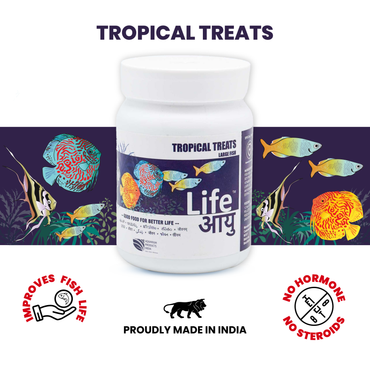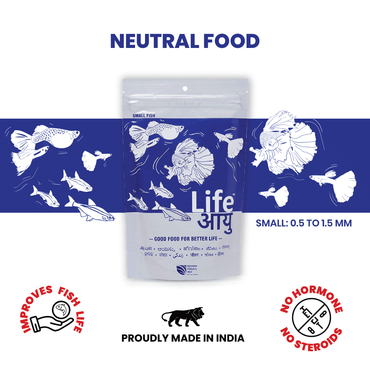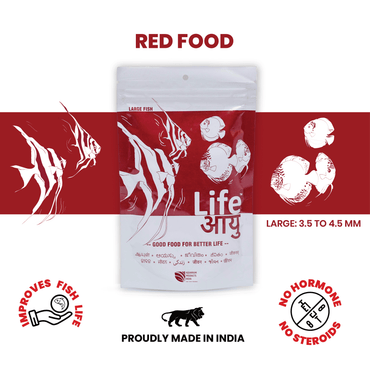Molly Fish Care Guide – The Hardy, Stylish Livebearer with a Peaceful Soul
Often mistaken for being “just another beginner fish,” Mollies are surprisingly versatile. From freshwater to brackish tanks, from solo to community tanks, they can adapt anywhere with the right care.
🗺️ Origin, History, and Appearance
Mollies belong to the genus Poecilia, specifically species like Poecilia sphenops, P. latipinna (Sailfin Molly), and P. velifera. They’re native to Mexico, Central America, and parts of South America, found in freshwater streams, brackish coastal lagoons, and estuaries.
Mollies are medium-sized livebearers with smooth, torpedo-shaped bodies. Depending on the variety, they grow between 2.5 to 5 inches. Their fins can be short, lyre-shaped, or impressively large in sailfin strains. What sets them apart is their shimmering scale texture, elegant movement, and tolerance to salinity which is something few other community fish can boast.
🎨 Varieties of Molly Fish
Mollies are extremely hybridized, leading to many popular types sold in the hobby:

|
Common Name |
Description |
|
Black Molly |
Solid jet-black, classic and popular |
|
Dalmatian Molly |
White with black spots, high contrast |
|
Golden Molly |
Vibrant gold/yellow with metallic shine |
|
Balloon Molly |
Rounded belly due to a spinal mutation |
|
Sailfin Molly |
Large, tall dorsal fin resembling a sail |
|
Lyretail Molly |
Elongated, decorative tail fin |
These varieties are crossbred frequently, especially in commercial farms — so hybrids are very common.
🌿 Natural Habitat & Wild Diet
In the wild, Mollies prefer warm, calm, plant-filled waters - including brackish mangroves and freshwater ponds. They’re naturally found in shoals, grazing on algae, microflora, and small invertebrates.
Their diet in the wild includes:
- Algae and biofilm
- Zooplankton
- Tiny worms and insect larvae
- Detritus
This makes them perfect algae grazers in community tanks, though they still need protein-rich foods in captivity.
🏠 Tank Size Requirements
- Minimum tank size: 20 gallons (for 3–4 mollies)
- Larger tanks (30+ gallons) are better for sailfin or balloon mollies, and for breeding colonies
Mollies are active swimmers and thrive in horizontal tanks with plenty of open space.
💧 Ideal Water Parameters

|
Parameter |
Ideal Range |
|
Temperature |
24–28°C (75–82°F) |
|
pH |
7.5–8.5 |
|
Hardness |
Medium to Hard (10–30 dGH) |
|
Salinity |
Can tolerate slight brackish (optional) |
|
Ammonia/Nitrite |
0 ppm |
✅ Indian tap water is usually suitable without needing adjustments.
🌿 You can add a pinch of aquarium salt per 10 liters for improved health and stress reduction, but it’s optional.
🧠Behavior & Tank Personality
Mollies are:
- Peaceful but socially dominant in groups
- Active mid-top swimmers
- Constant grazers and algae pickers
- Sometimes fin-nippy (especially balloon types or overcrowded tanks)
They are best in groups of 3–6 or more, with a 2:1 female-to-male ratio to avoid mating stress.
🌊Tank Setup & Décor
- Substrate: Sand or fine gravel
- Plants: Vallisneria, Java moss, Hornwort, Floating plants
- Décor: Smooth driftwood, stones, breeding hideouts
- Filtration: Medium to strong flow
- Lighting: Moderate to strong to encourage algae growth (they graze on it)
Sailfin Mollies appreciate open swimming lanes, while Balloon Mollies prefer gentle flow and calmer areas.
⏳ Lifespan & Growth
- Lifespan: 3–5 years on average
- Growth rate: Rapid in juveniles, reaching full size in 4–6 months
With proper feeding and space, they grow healthy and exhibit more vibrant colors.
👨👩👧👦 Ideal Tank Mates
Mollies work well with:
- Guppies, Platies, Swordtails
- Corydoras, Loaches
- Tetras (larger types like Black Skirt, Lemon)
- Gouramis (dwarf and honey)
- Shrimp and snails in planted setups
Avoid:
- Bettas (balloon molly fin nipping risk)
- Aggressive cichlids
- Overcrowded nano tanks
🧫 Common Diseases and Problems
Mollies are robust, but prone to:
- Ich (white spots) in cooler water
- Fin rot in dirty tanks or after fin-nipping
- Velvet or fungus in overcrowded community tanks
- Swim bladder issues in balloon strains
✅ Weekly 25–40% water changes
✅ Use Life AAYU Nutro Fit Plus weekly for immunity boost, parasite control, and bloating prevention
🍽️ Best Food for Mollies
· Life Aayu Tropical Treats fish food

✅ Ayurvedic Color Enhancement – Red paprika and astaxanthin naturally intensify fish color.
✅ High Protein Content (52%) – Anchovy and marine proteins support muscle tone, growth, and activity.
✅ Vitamin-Infused Immunity Support – Fortified with Vitamin A, B12, C, E and cod liver oil for resistance to disease and stress.
✅ Handmade & Gut Friendly – Gentle on digestion, reduces bloat, boosts nutrient absorption.
✅ Universal Fish Compatibility – Suitable for guppies, barbs, discus, cichlids, gouramis, and more.
✅ Keeps Tank Water Clear – Low-waste formulation minimizes ammonia spikes and keeps aquarium cleaning to a minimum.
· Life Aayu Neutral Fish Food in Small Size
✅ All-Age, All-Size Bala

nced Nutrition – Perfect for baby, juvenile, and adult fish in community tanks.
✅ Neutral Buoyancy Pellets – Soft, gentle, and digestible for both surface and bottom feeders.
✅ Immunity & Metabolism Boost – Fortified with Vitamins A, B12, and C for health, behavior, and stress reduction.
✅ No Fillers or Steroids – Made without wheat binders, hormones, or artificial colors.
✅ Cleaner Tank Formula – Reduces waste buildup and minimizes the need for frequent water changes.
✅ Ayurvedic Support – Daily nourishment rooted in Indian wellness philosophy for optimal fish vitality and longevity..
· Life Aayu Red Fish Food

✅ Ayurvedic Color Enhancement – Red paprika and astaxanthin naturally intensify fish color.
✅ High Protein Content (52%) – Anchovy and marine proteins support muscle tone, growth, and activity.
✅ Vitamin-Infused Immunity Support – Fortified with Vitamin A, B12, C, E and cod liver oil for resistance to disease and stress.
✅ Handmade & Gut Friendly – Gentle on digestion, reduces bloat, boosts nutrient absorption.
✅ Universal Fish Compatibility – Suitable for guppies, barbs, discus, cichlids, gouramis, and more.
✅ Keeps Tank Water Clear – Low-waste formulation minimizes ammonia spikes and keeps aquarium cleaning to a minimum.
🟢 Feed 1–2 times a day in small quantities
🔴 Overfeeding balloon mollies can worsen digestive issues
♀️♂️ How to Identify Male and Female Mollies
|
Trait |
Male |
Female |
|
Anal Fin |
Gonopodium (thin, pointed) |
Fan-shaped |
|
Body Size |
Slimmer |
Rounder, larger |
|
Color |
Brighter |
Paler (in wild-type strains) |
|
Behavior |
Constantly chases females |
Passive unless pregnant |
Balloon females have very round bellies — do not confuse this with pregnancy alone.
🐣 Breeding Mollies
Mollies are livebearers, like guppies and platies.
- Gestation: 25–35 days
- Brood size: 20–80 fry, depending on size and age
- Provide dense plants or breeding traps to protect fry
- Separate babies into a grow-out tank for best survival
Feed fry:
- Crushed flakes or powdered fry food
- Baby brine shrimp
- Microworms for fast growth
Mollies can store sperm and give birth multiple times without re-mating!
🎨 Coloration and Mood Changes
Color changes often signal:
- Bright hues = happy, healthy
- Faded body, clamped fins = stress or illness
- Flashing (rubbing on surfaces) = possible parasites or pH imbalance
Color intensity improves with:
- Good food
- Stable water
- Clean tank
- Space to swim
💡 Bonus Tips & Fun Facts
- Mollies can survive in low-salinity brackish setups
- Balloon mollies are cute but genetically deformed — avoid breeding them too young
- They are great for planted tanks — they don’t uproot plants
- Excellent choice for educating kids or school projects
📩 Need Expert Help?
Need Expert Help?
💬 Write to us at info@mayurdevaquascaper.com
📍 Visit our Gallery in Mumbai (GSM Aquarium Products)
🛒 Shop high-quality Indian-made food and supplements: AquariumProductsIndia.in



